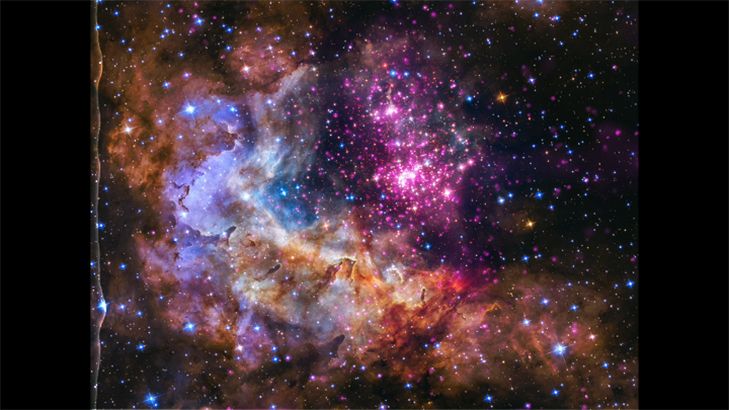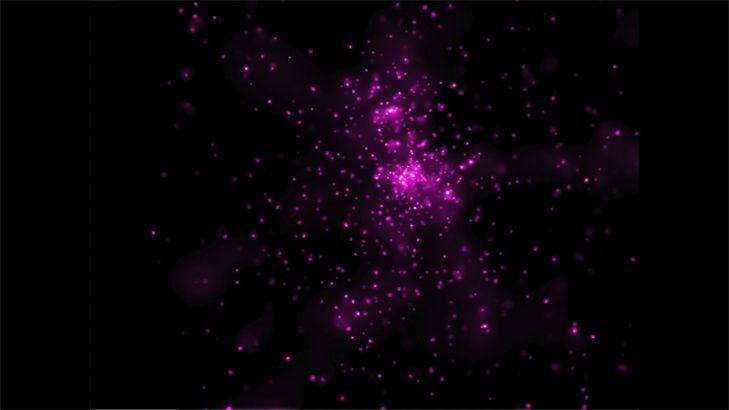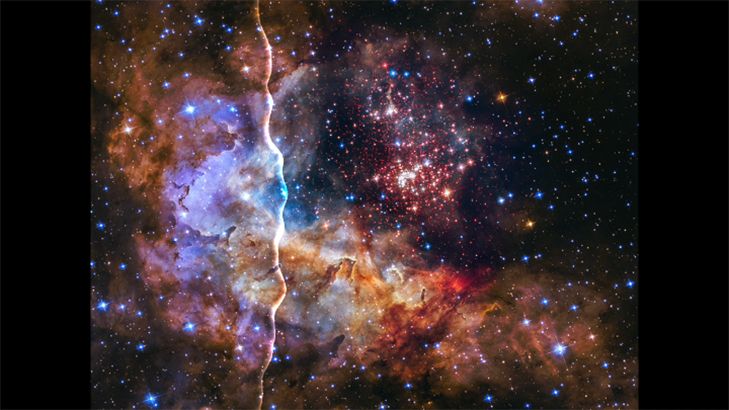
Westerlund 2 Sonification
This is a cluster of young stars — about one to two million years old — located about 20,000 light-years from Earth. In its visual image form, data from Hubble (green and blue) reveals thick clouds where stars are forming, while X-rays seen from Chandra (purple) penetrate through that haze. In the sonified version of this data, sounds sweep from left to right across the field of view with brighter light producing louder sound. The pitch of the notes indicates the vertical position of the sources in the image with the higher pitches towards the top of the image. The Hubble data is played by strings, either plucked for individual stars or bowed for diffuse clouds. Chandra’s X-ray data is represented by bells, and the more diffuse X-ray light is played by more sustained tones.
Access more information & file formats on this sonification
The Chandra sonifications were led by the Chandra X-ray Center (CXC), with input from NASA's Universe of Learning. The sustained collaboration was driven by visualization scientist Dr. Kimberly Arcand (CXC), astrophysicist Dr. Matt Russo and musician Andrew Santaguida (both of the SYSTEM Sounds project). For other sonifications, please see their linked pages.
cxcpub@cfa.harvard.edu
617-496-7941
60 Garden Street,
Cambridge, MA 02138 USA
Art Direction/Design: Kristin DiVona
Web Developers: Khajag Mgrdichian
& Kelly T.S. Williamson
Chandra X-ray Center, Operated for NASA by the Smithsonian Astrophysical Observatory. This site was developed with funding from NASA under contract NAS8-03060 | Privacy | Accessibility
Additional support from NASA's Universe of Learning (UoL). UoL materials are based upon work supported by NASA under award number NNX16AC65A to the Space
Telescope Science Institute, working in partnership with Caltech/IPAC, Jet Propulsion Laboratory, and Smithsonian Astrophysical Observatory.



